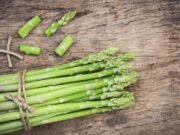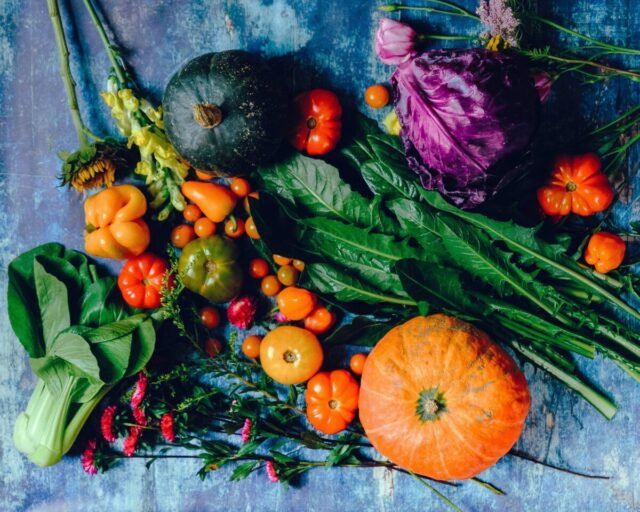Welcome to the wonderful world of homegrown vegetables! There’s nothing quite like biting into a juicy tomato plucked straight from your own garden. Growing your own produce is deeply rewarding, and also surprisingly achievable even for total beginners.
This comprehensive guide will equip you with all the knowledge you need to get started on your journey towards a thriving, bountiful vegetable garden. You’ll discover the best vegetables to plant for an easy harvest, pick up essential gardening tips for success, and learn how to embrace organic practices for the healthiest homegrown food. Let’s dig in!
Easy Vegetables to Grow for Beginning Gardeners
When you’re just getting started with vegetable gardening, it’s important to choose varieties that are relatively simple to cultivate. Focusing on beginner-friendly crops will help ensure you enjoy a bountiful harvest with minimal frustration. Here are some of the best options to get your garden off to a great start.
Lettuce – A Satisfying Staple Crop
Crisp, fresh lettuce is a joy to grow and a staple ingredient in salads and sandwiches. Leaf lettuces like oakleaf, romaine, and red sail are great choices for beginners. They germinate readily, mature quickly, and don’t take up too much space.
Plant lettuce seeds 1⁄4 inch deep in early spring, spacing them 6 inches apart. Loose, fertile soil and consistent moisture are key. Harvest outer leaves as needed, taking care not to damage the central growing point. With proper care, you’ll enjoy fresh lettuce from your garden for months!
Lettuce growing in a garden
Green Beans – A Tasty and Prolific Crop
Nothing beats the taste of just-picked green beans! Bush varieties like Provider and Contender are great for beginners, as they don’t require trellising.
Sow seeds 1 inch deep and 2 inches apart in spring or summer. Beans need at least 6 hours of sun daily and consistent moisture. Pick beans when pods are slender and crisp, before seeds start to bulge. With attentive harvesting, 5-10 plants can supply a family all season long.
Green bean plants growing in a garden
Peas – A Cool Weather Favorite
Sweet garden peas are a tasty springtime treat in any garden. Look for compact bush or dwarf varieties like Little Marvel and Sugar Ann that grow well in limited space.
Sow seeds 1 inch deep and 1 inch apart as soon as soil can be worked in spring. Peas thrive in cool conditions and appreciate a trellis or other support structure. Pick pods regularly to encourage continued production. Nothing beats the sweet flavor of fresh-picked garden peas!
Pea plants growing on a trellis
Radishes – A Fast-Growing Treat
With their spicy crunch, radishes are a great choice for impatient beginner gardeners. Varieties like Champion and Cherry Belle mature in just 3-4 weeks from seeding.
Sow seeds 1⁄2 inch deep and 1 inch apart in early spring or fall. Radishes need loose, fertile soil and consistent moisture for best growth. Begin harvesting as soon as roots size up, before they become woody. Small plantings every 2-3 weeks will provide a steady radish supply.
Radishes growing in a raised garden bed
Carrots – A Sweet Underground Treat
Nothing beats the flavor of freshly harvested carrots. Shorter varieties like Thumbelina and Little Finger are great for beginners, as they mature quickly and resist forked roots.
Sow seeds 1⁄4 inch deep and 1 inch apart in spring or summer. Carrots need loose, rock-free soil and consistent moisture to size up properly. Begin harvesting as soon as roots reach desired size. Staggered plantings will provide a continuous carrot crop.
Carrots growing in the ground
Focusing on these easy-to-grow vegetables will set you up for gardening success right from the start. With proper care and attentive harvesting, you’ll enjoy their flavorful bounty all season long!
Essential Tips for Vegetable Gardening Success
Beyond selecting suitable crops, there are some important practices that every beginning gardener should master. Following these simple vegetable gardening tips will help ensure your plants thrive and produce a bountiful harvest.
Prepare Your Soil Properly
Rich, fertile soil is the foundation of a productive vegetable garden. Before planting, till or turn over the soil to a depth of 8-12 inches to break up compaction and improve drainage. Mix in 2-3 inches of finished compost to nourish plants and retain moisture.
Throughout the season, use compost, manure, or organic fertilizer to replenish nutrients. Weed regularly to prevent competition for resources. Proper soil preparation and care makes all the difference!
Water Thoroughly and Consistently
Vegetables require about 1-2 inches of water per week from rain or irrigation. Inconsistent moisture causes issues like blossom end rot on tomatoes and bitter, misshapen carrots. Use soaker hoses or drip irrigation to target the soil and reduce waste. Water early in the day to minimize evaporation.
Check soil moisture frequently, and water when the top few inches become dry. Most vegetables thrive with thorough, even watering. Pay close attention to this essential task!
Control Pests Naturally
Common vegetable garden pests like aphids, cabbage worms, beetles, and slugs can quickly damage plants. But there are many organic, non-toxic ways to keep them in check.
Companion planting with pest-deterring flowers like marigolds helps repel insects. Handpicking larger pests like cabbage worms can also make a difference. Applying neem oil or insecticidal soap will control soft-bodied insects like aphids. A healthy garden ecosystem with biodiversity is your best defense against pests.
Embracing Organic Methods for a Natural Harvest
In addition to the basic gardening fundamentals, consider embracing organic techniques for the healthiest, most environmentally friendly vegetable harvest.
Why Go Organic?
Organic gardening avoids the use of synthetic fertilizers and pesticides, prioritizing natural methods instead. This approach offers many benefits:
- Improves soil health by boosting microbial life and organic matter
- Reduces pollution from chemical runoff into waterways
- Promotes biodiversity by providing habitat for beneficial insects and pollinators
- Produces more nutritious food free from toxic residues
By gardening organically, you can grow vegetables sustainably while protecting the health of your family and the environment.
Organic Gardening Techniques
Shifting to organic vegetable gardening simply requires some modifications to your practices:
- Feed plants with compost and manure: These natural amendments provide nutrients without chemicals.
- Control pests with beneficial insects: Ladybugs, lacewings, and other predators keep pests in check.
- Prevent disease with crop rotation: Varying plant families in each bed avoids buildup of soil diseases.
- Weed by hand: Manual weeding and mulching with leaves or straw suppresses unwanted plants.
With some thoughtful adjustments, you can garden organically for a non-toxic, eco-friendly harvest.
Conclusion
We’ve covered a lot of ground on the journey to a thriving vegetable garden! By selecting suitable beginner-friendly crops, following fundamental gardening tips, and embracing organic practices, you’re now equipped to grow a bountiful harvest.
The joys of biting into a sun-warmed tomato or pulling up a perfect carrot make all the effort worthwhile. Start preparing your soil, select your seeds and plants, and look forward to savoring the fruits of your gardening labor. Happy growing!































